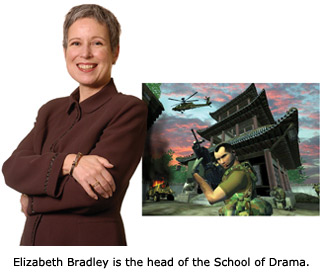Let me share a conversation I had this week with my 15-year-old son. He was regaling me with the dazzling attributes of a soon-to-be released video game called, I think, “Ghost Recon.” One source of his enthusiasm seemed to be the sheer quality of the computer graphics, “They’re so sophisticated now, so real,” he said. Why, I mildly queried—knowing I was about to find the label “dinosaur” affixed to my forehead—was simulated reality so impressive? Surely this was hardly the role of fantasy. “But you don’t get it—this is a world I can control,” he responded.

This was a thought that stayed with me. Many of the new technologies that now infiltrate our lives do give us an illusion of greater empowerment—certainly more access and ability to manipulate information. And in the contemporary reality we all inhabit, something that simulates mastery over a complex environment—that demonstrates we can make a discernable immediate impact—is seductive for certain, especially to the young.
But do they deserve more?
Caveat emptor: I don’t mean to demonize gaming per se. “The New York Times” ran an extensive piece exploring whether game illustration should be legitimized as an art form. Some of the most exciting work currently on our arts landscape is made by artists exploring the storytelling potential of the technologies.
But what compass will offer the ability to differentiate among kinds of cultural “white noise” and guide us toward actual meaning?
I believe the confusion generated by facing innumerable and bewildering choices, by the over-stimulated condition brought on by attempting to do too many things at once, compounded by the heightened sense of vulnerability created by recent events in the natural world—never mind in society at large—are symptoms of a profound malaise that can only be ameliorated by our artists.
Artists’ special alchemy allows them to refract and interpret the world so that we may all define ourselves in it. Their kaleidoscopic, yet inclusive, visions ultimately distill experience in ways that allow us to tolerate ambiguity and revel in the unpredictable. Artists imagine and articulate new worlds and possibilities, drawing uncommon connections and hitherto unassociated elements together in ways that allow us to find faith in the future.
And when we congregate to share and celebrate their individual creative impulses, we engage in an exchange between artist and audience that demands our sustained contemplative attention. This offers nothing less than the promise of preserving our shared humanity.
The question, then, is not whether the arts can contribute to an increasingly technological world, but, rather, how we can collectively move them to the center of our concerns, where they will then be positioned to effect the rescue the world so profoundly needs.
Related Link:
School of Drama



